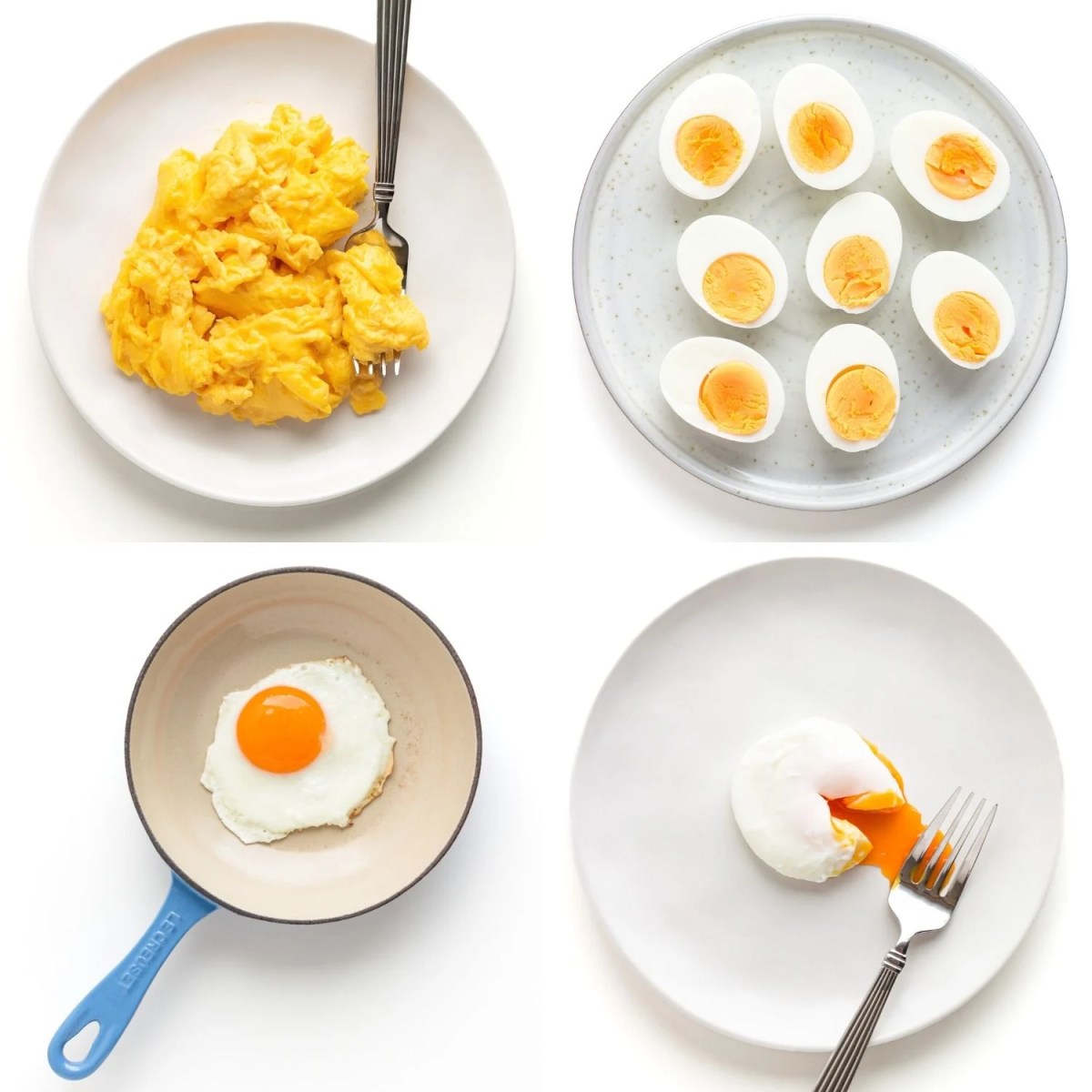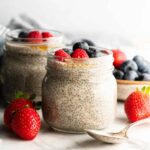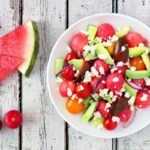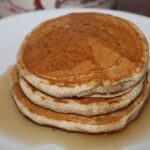Embark on a culinary adventure, free from the constraints of eggs! This guide unveils the secrets to creating delicious and satisfying egg-free dishes, from fluffy cakes to crispy cookies. Discover the versatility of simple substitutes, learn essential techniques, and unlock a world of baking and cooking possibilities previously thought impossible without eggs. Prepare to amaze yourself and others with your newfound egg-free expertise.
Whether you’re navigating dietary restrictions, exploring new culinary horizons, or simply seeking creative alternatives, this comprehensive guide will empower you with the knowledge and confidence to confidently tackle egg-free recipes. From understanding the fundamental roles eggs play in baking to mastering advanced techniques, we’ll equip you with the tools and recipes to create delectable meals and treats that everyone will love, regardless of their dietary needs.
Egg-Free Breads and Quick Breads

Baking delicious and airy bread without eggs presents a unique challenge, as eggs contribute significantly to structure, moisture, and richness. However, with the right techniques and ingredients, creating light and fluffy egg-free loaves is entirely achievable. This section explores three egg-free bread recipes and highlights the crucial role of proper kneading and proofing in achieving optimal results.
Egg-Free Bread Recipes
The absence of eggs necessitates the use of alternative binding agents and moisture retainers. Successful egg-free bread relies on a precise balance of ingredients and careful technique. The following recipes demonstrate how to create satisfying white bread, whole wheat bread, and banana bread without compromising on flavor or texture.
Egg-Free White Bread: This recipe uses a combination of flaxseed meal and applesauce to mimic the binding properties of eggs. The flaxseed meal absorbs liquid and creates a gel-like consistency, while the applesauce adds moisture and sweetness. The result is a soft, fluffy white bread with a delicate crumb.
Egg-Free Whole Wheat Bread: Whole wheat bread benefits from the added fiber and nutrients of whole wheat flour. However, the coarser texture of whole wheat flour can make it more challenging to create a light loaf. This recipe incorporates yogurt for moisture and a slightly tangy flavor, along with vital wheat gluten for added strength and elasticity. The final product boasts a hearty texture and a satisfying wholesome flavor.
Egg-Free Banana Bread: Banana bread naturally incorporates moisture and sweetness from ripe bananas, making it a particularly easy bread to adapt for egg-free baking. This recipe uses mashed bananas as a primary binding agent and adds a touch of oil for richness and moisture. The result is a moist, tender banana bread with a naturally sweet flavor.
Kneading and Proofing Techniques for Egg-Free Bread
Proper kneading and proofing are paramount for achieving a light and airy texture in egg-free bread. Kneading develops the gluten strands, giving the bread its structure and elasticity. Without eggs, the gluten network needs to be carefully developed to prevent a dense or gummy loaf. Insufficient kneading will result in a crumbly texture, while over-kneading can lead to a tough bread. Similarly, proper proofing allows the yeast to ferment, producing carbon dioxide that leavens the bread. Under-proofing results in a dense loaf, while over-proofing can lead to a sour taste and a collapsed structure.
Step-by-Step Guide for Making Egg-Free Yeast Bread
This guide details the process of making a basic egg-free yeast bread, focusing on techniques that compensate for the absence of eggs.
- Activate the Yeast: Combine warm water (not hot!), sugar, and yeast in a large bowl. Let stand for 5-10 minutes until foamy. This confirms the yeast is alive and active.
- Combine Dry Ingredients: In a separate bowl, whisk together flour, salt, and any other dry ingredients (e.g., vital wheat gluten).
- Combine Wet and Dry Ingredients: Gradually add the dry ingredients to the yeast mixture, mixing with a wooden spoon or a stand mixer with a dough hook until a shaggy dough forms.
- Knead the Dough: Knead the dough for 8-10 minutes, either by hand on a lightly floured surface or using a stand mixer. The dough should be smooth and elastic.
- First Rise (Bulk Fermentation): Place the dough in a lightly oiled bowl, turning to coat. Cover with plastic wrap and let rise in a warm place for 1-1.5 hours, or until doubled in size.
- Shape the Dough: Gently punch down the dough and shape it into a loaf. Place it in a greased loaf pan.
- Second Rise (Proofing): Cover the loaf pan with plastic wrap and let rise for another 30-45 minutes, or until almost doubled in size.
- Bake: Preheat oven to 375°F (190°C). Bake for 30-35 minutes, or until golden brown and the internal temperature reaches 200°F (93°C).
- Cool: Let the bread cool completely on a wire rack before slicing and serving.
Troubleshooting Common Problems in Egg-Free Yeast Bread
Problem: Dense Bread: This often indicates insufficient kneading or proofing. Ensure you knead the dough thoroughly and allow sufficient time for both rises. Using a stand mixer with a dough hook can help develop the gluten network more effectively.
Problem: Dry Bread: This could be due to insufficient moisture. Try adding a tablespoon or two of additional water or milk during kneading, or using a higher percentage of liquid in the recipe.
Problem: Crumbly Bread: This often indicates a lack of gluten development. Ensure you knead the dough for the recommended time, and consider adding vital wheat gluten to the recipe for extra strength and elasticity.
Problem: Sour Bread: Over-proofing can lead to a sour taste. Pay close attention to the proofing times and avoid letting the dough rise for too long.
Exploring Egg-Free Desserts and Treats
Baking delicious desserts without eggs might seem daunting, but with the right techniques and ingredients, you can create wonderfully rich and textured treats that rival their egg-containing counterparts. This section explores three delectable egg-free dessert recipes, offering guidance on achieving that perfect texture every time. We’ll delve into the secrets of creating crisp cookies and fudgy brownies, all while keeping things egg-free.
Egg-Free Chocolate Chip Cookies
These cookies offer a delightful chewiness and satisfying chocolate chip burst in every bite, proving that eggs aren’t essential for exceptional cookies.
The key to achieving a crisp edge and a soft center in egg-free cookies lies in the balance of wet and dry ingredients, as well as baking time and temperature. Using a combination of oil and applesauce provides the necessary moisture and binding, while chilling the dough allows the gluten to relax, resulting in a more tender cookie.
- Ingredients:
- 1 cup (2 sticks) unsalted butter, softened
- ¾ cup granulated sugar
- ¾ cup packed brown sugar
- 2 teaspoons pure vanilla extract
- 1 cup unsweetened applesauce
- 2 ¼ cups all-purpose flour
- 1 teaspoon baking soda
- 1 teaspoon salt
- 2 cups chocolate chips
- Preheat oven to 375°F (190°C). Line baking sheets with parchment paper.
- In a large bowl, cream together the softened butter, granulated sugar, and brown sugar until light and fluffy.
- Beat in the vanilla extract and applesauce until well combined.
- In a separate bowl, whisk together the flour, baking soda, and salt.
- Gradually add the dry ingredients to the wet ingredients, mixing until just combined. Be careful not to overmix.
- Stir in the chocolate chips.
- Chill the dough for at least 30 minutes. This step helps prevent the cookies from spreading too thin.
- Drop rounded tablespoons of dough onto the prepared baking sheets, leaving space between each cookie.
- Bake for 9-11 minutes, or until the edges are golden brown.
- Let the cookies cool on the baking sheets for a few minutes before transferring them to a wire rack to cool completely.
Fudgy Egg-Free Brownies
These intensely chocolatey brownies boast a wonderfully fudgy texture, proving that eggs aren’t a prerequisite for decadent indulgence. The secret to achieving that perfect fudgy texture lies in using a combination of oil and melted chocolate for richness and moisture. Underbaking slightly also contributes to the desired fudgy consistency.
- Ingredients:
- ½ cup (1 stick) unsalted butter, melted
- 1 cup unsweetened chocolate, melted
- 1 ½ cups granulated sugar
- ¾ cup all-purpose flour
- ¼ teaspoon salt
- 1 teaspoon vanilla extract
- ½ cup vegetable oil
- 1 cup chocolate chips (optional)
- Preheat oven to 350°F (175°C). Grease and flour an 8×8 inch baking pan.
- In a large bowl, combine the melted butter, melted chocolate, and sugar. Stir until smooth.
- Add the flour and salt, mixing until just combined. Do not overmix.
- Stir in the vanilla extract and vegetable oil.
- If desired, stir in the chocolate chips.
- Pour the batter into the prepared pan and spread evenly.
- Bake for 20-25 minutes, or until a toothpick inserted into the center comes out with moist crumbs.
- Let the brownies cool completely in the pan before cutting into squares.
Easy Egg-Free Pie Crust
A flaky, tender pie crust is achievable even without eggs. This recipe uses a combination of ice water and vegetable shortening to create the perfect texture. The key is to keep the dough cold throughout the process, preventing the gluten from developing too much, which would result in a tough crust.
- Ingredients:
- 2 ½ cups all-purpose flour
- 1 teaspoon salt
- 1 cup vegetable shortening, chilled and cubed
- ½ cup ice water
- In a large bowl, whisk together the flour and salt.
- Cut in the chilled vegetable shortening using a pastry blender or your fingers until the mixture resembles coarse crumbs.
- Gradually add the ice water, a tablespoon at a time, mixing lightly until the dough just comes together. Do not overmix.
- Form the dough into a disk, wrap it in plastic wrap, and chill for at least 30 minutes.
- On a lightly floured surface, roll out the dough to your desired thickness. Carefully transfer the dough to a pie plate.
- Trim and crimp the edges.
- Prick the bottom of the crust with a fork to prevent bubbling during baking.
- Bake according to your pie recipe instructions. A blind bake (baking the crust before adding the filling) is often recommended for a crispier crust.
Congratulations! You’ve now unlocked the world of egg-free cooking. With the knowledge and recipes provided in this guide, you’re ready to confidently experiment, adapt, and create your own delicious egg-free masterpieces. Remember, the key is understanding the function of eggs and choosing the right substitutes. So, gather your ingredients, embrace the challenge, and prepare to delight your taste buds with a wide array of egg-free culinary creations. Happy cooking!
Expert Answers
Can I freeze egg-free baked goods?
Yes, many egg-free baked goods freeze well. Wrap them tightly in plastic wrap and then foil to prevent freezer burn. Thaw at room temperature or in the refrigerator.
What are some common mistakes to avoid when making egg-free baked goods?
Overmixing the batter, using too much liquid, and not properly measuring ingredients are common pitfalls. Follow recipes carefully and use a kitchen scale for accurate measurements.
How long do egg-free baked goods last?
This depends on the recipe and storage. Generally, egg-free cakes and muffins last 3-4 days at room temperature, while breads may last a bit longer. Proper storage in an airtight container is crucial.
Are all egg substitutes interchangeable?
No. Different substitutes have different properties. Flaxseed meal works well as a binder, while applesauce adds moisture. Choose the best substitute based on the recipe’s requirements.


